
Dan McCarthy - Why I Create
Exploring the inspirations and attitudes of artists working with clay and ceramic, featured in Vitamin C
Born in Honolulu and growing up in Southern California, Dan McCarthy specialized in both painting and ceramics at the San Francisco Art Institute. Upon moving to New York in 1989, his painting practice took over, and it wasn’t until almost twenty-five years later, in 2013, that he reconnected with ceramic: ‘I went right back to it like a fish to water.’
McCarthy’s ceramics are intentionally low-tech, simple and direct. His tools are minimal – ice lolly sticks, forks, spoons – with a process that favours touch; and what drives him is the emotionally intuitive handling of wet, heavy clay that is constantly in a state of drying out, instinctively working this material into shapes with a ‘sense of immediacy and buoyant spirit’. His approach employs multiple glaze firings that bring to life gold and silver leaf, gold and silver lustre, and rainbow-coloured oil and water-based paint. The results are often vivid and scintillating.
His playful works take the form of smiley-faced individual portraits – a series that he fittingly calls ‘Facepots’. It’s hard not to wonder if these cheery vessels have a darker undertone, one that points towards modes of vacuous consumerism that keep us smiling and jolly but, ultimately, hollow and empty. As brightly coloured, unstable glazes crackle and run, these objects could be seen as symbols of a dysfunctional veneer of happiness that doesn’t penetrate quite as deeply as we’d hope.
Here the Vitamin C: Clay and Ceramic in Contemporary Art featured artist tells us why he works in the medium, what particular challenges it holds for him and who he thinks always gets it right.
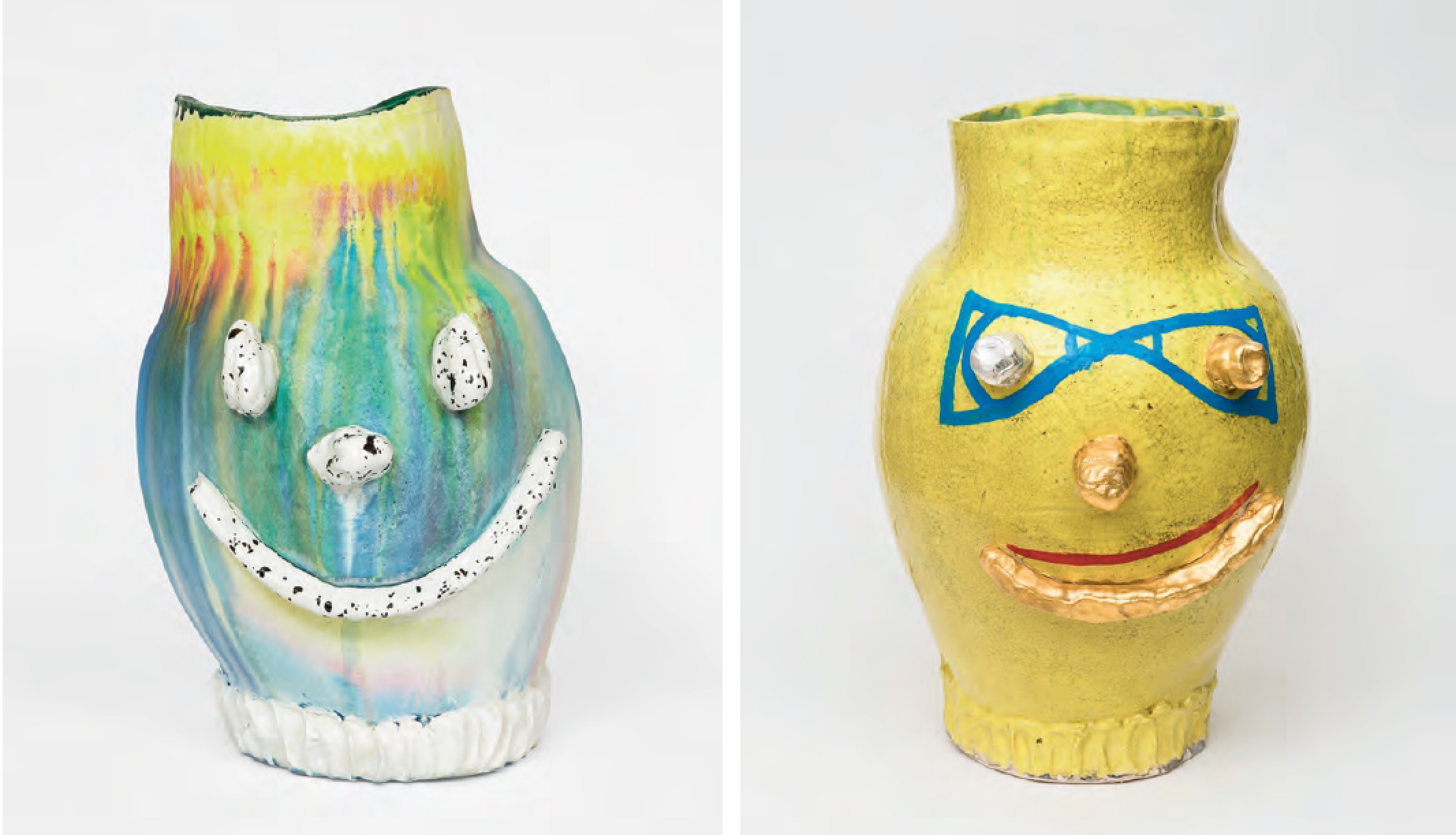
Who are you and what’s your relationship to clay and ceramics? Living now, in a human body here on planet earth. When I stop and reflect on that thought, I pause at the very beginning, on day one, where just being born is enough for a lifetime of gratitude and reflection. I’d like to extend my feeling of gratitude to an innate and endless exploration of meaning and material. That would be one wish. Cultivating a historical perspective and emotional range from which to build an image is another.
My ceramic process is intuitive, personal and direct, the material qualities suit my manner of object making, which is immediate and non-negotiable. I enjoy the material’s straightforward process, the tradition, the order indicated: making, drying, firing. Each stage is uniquely transformative and dynamic. The intense heat during the firing stages is one of the many aspects that sets ceramics apart from other artistic mediums. Trial by Fire. It's ancient and it works. I’m not looking for a lot of invention in the process itself, rather asking my artwork to serve as a key to activate inspiration.
Why do you think there’s an increased interest around clay and ceramics right now? Possibly the intersection of a symbolically primordial material and objects possessing a handmade intimacy becomes a compelling idea given the looming Tsunami of the virtual, digital, information age. Perhaps it's a simply a knee jerk reaction to avant-garde art cycles, maybe Ceramics and ideas around it were marginalized long enough and the resultant decomposition made it easy and ripe for a reinvestigation.
Either way any reinvestment in Ceramics is creating an opportunity to revisit an ancient traditional process, given the present iPhone era, this moment is loaded with potential. Of course the real challenge becomes “what next ?” what can be done now that has not been trodden on by the previous generations, what is really left to work with? This becomes quite a task today given the rich history of the artists and craftsman who have spent millennia working with the material in their time.
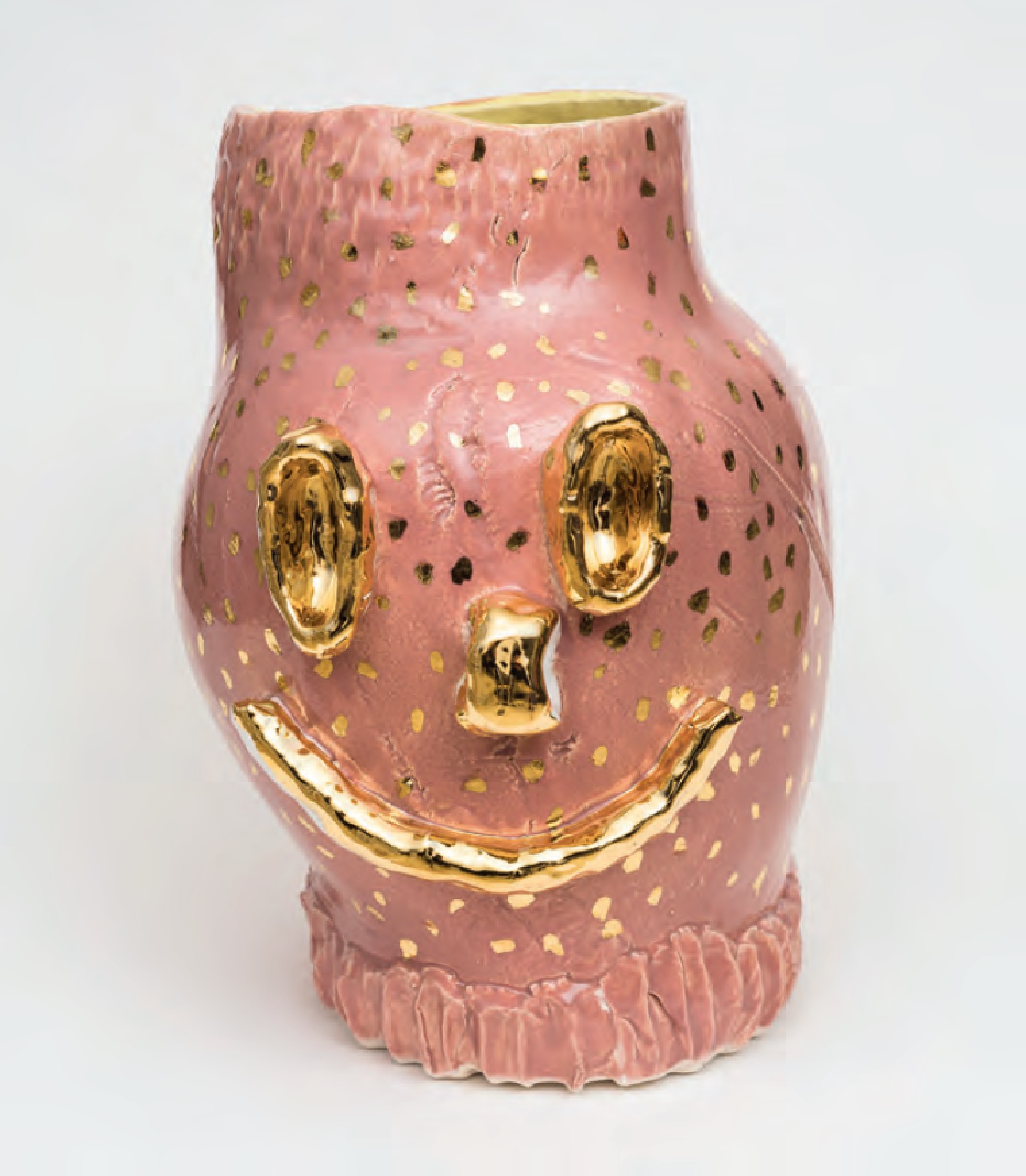
Ceramics is sometimes regarded as decorative, rather than fine arts. Does the distinction bother or annoy you? I have not paid much attention to popular convention which attempts to bind aesthetics to topical cultural positions. Too much to absorb and too little to consider. It often appears that engaging popular sentiment invariably leads to an art that merely comments on popular cultural positions, which of course over time lose their meaning and significance. Artists who engage in the Craft vs. Art rhetoric risk getting stuck in a groove that circumnavigates attempts at expression, often leading to a dialog between an exhausted proposal and a tired process.
One way to approach freedom in making something may be to start fresh, from zero with just the material itself and let the historical lineage fall away, simply like dust in the wind. For myself it's best to start from the ground up, making things that make sense to me without wondering how they fit in or why. Trust what I know and go. I’d like to make something that taps into the bigger here and now, creating an object that becomes directed towards engaging a brighter future. Mine is an emotional proposal, realized directly through a minimized process with a limited skill set.
Whose work in this field do you admire? It would be an easy option to stop and get off the boat at Greek Black Figure Pottery from the 5th century BC or Japanese Oribe Ware Pottery from the Edo period. The type of perfection expressed in that work is hard to comprehend, something very significant then and more importantly, also very significant now. It would be a magic act except for the fact it’s not an illusion.
The 20th century American Ceramicist’s Peter Voulkos and Robert Turner have always been very inspirational to me. I’ve always greatly admired Voulkos work in general and especially for his stacked and combined sculptures made from wheel thrown and hand formed chunks of clay. The stacks totemic and primitive urgency inspire and radiate courage, demonstrating a very pure way of thinking and working. Robert Turner possessed a very unique way of making simple and yet very informed wheel thrown pots. His work expressed subtly while animating every aspect of the work through a delicate and nuanced set of personally developed techniques.
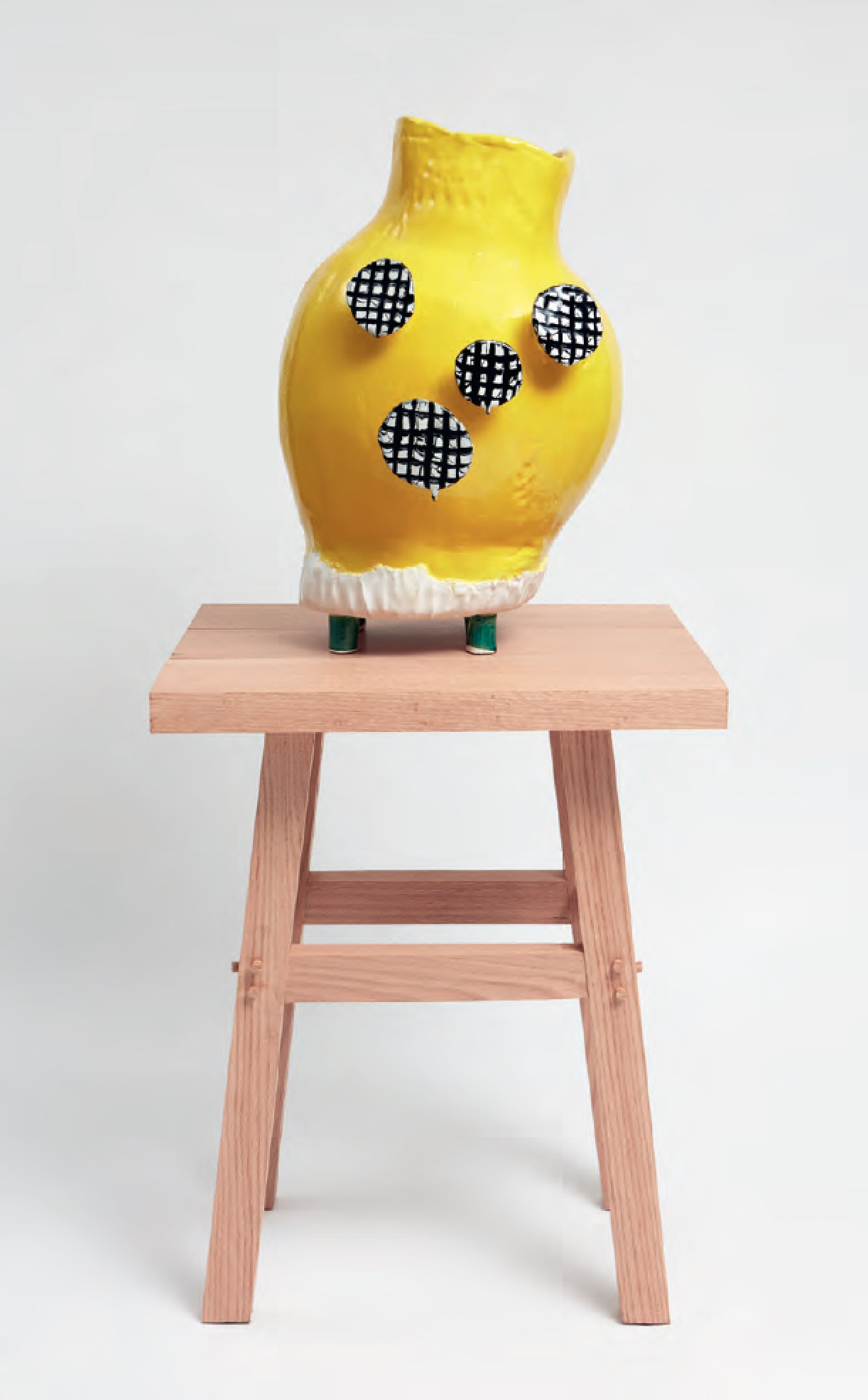
What are the hardest things for you to get ‘right’ and what are your unique challenges? Accepting things upon first glance or feeling. Letting my first impression be my final impression. Learning to take the me out of the process, letting go and letting the material tell me what to do. Doing more with thinking less.
What part does the vulnerability of the material play in things? Vulnerability always exists in anything precious. Of course the recognition of vulnerability lies in perception. An oil painted surface from the 18th century is many times over more fragile than a glazed ceramic piece, perhaps somehow the perceived fragility of ceramic objects lies in childhood, dropping a glass filled with water or breaking the handle of a porcelain tea cup.
I use gold leaf in my work and have made small repairs using a 15th century Japanese technique called Kinstsugi, whereby a crack or break is repaired with a gold-leafed glue. Kintsugi highlights the repair, allowing the repair to become part of the subject and history. In a way I’m pre-acknowledging a break or repair in the future and am providing guidelines and direction in the event it becomes necessary.
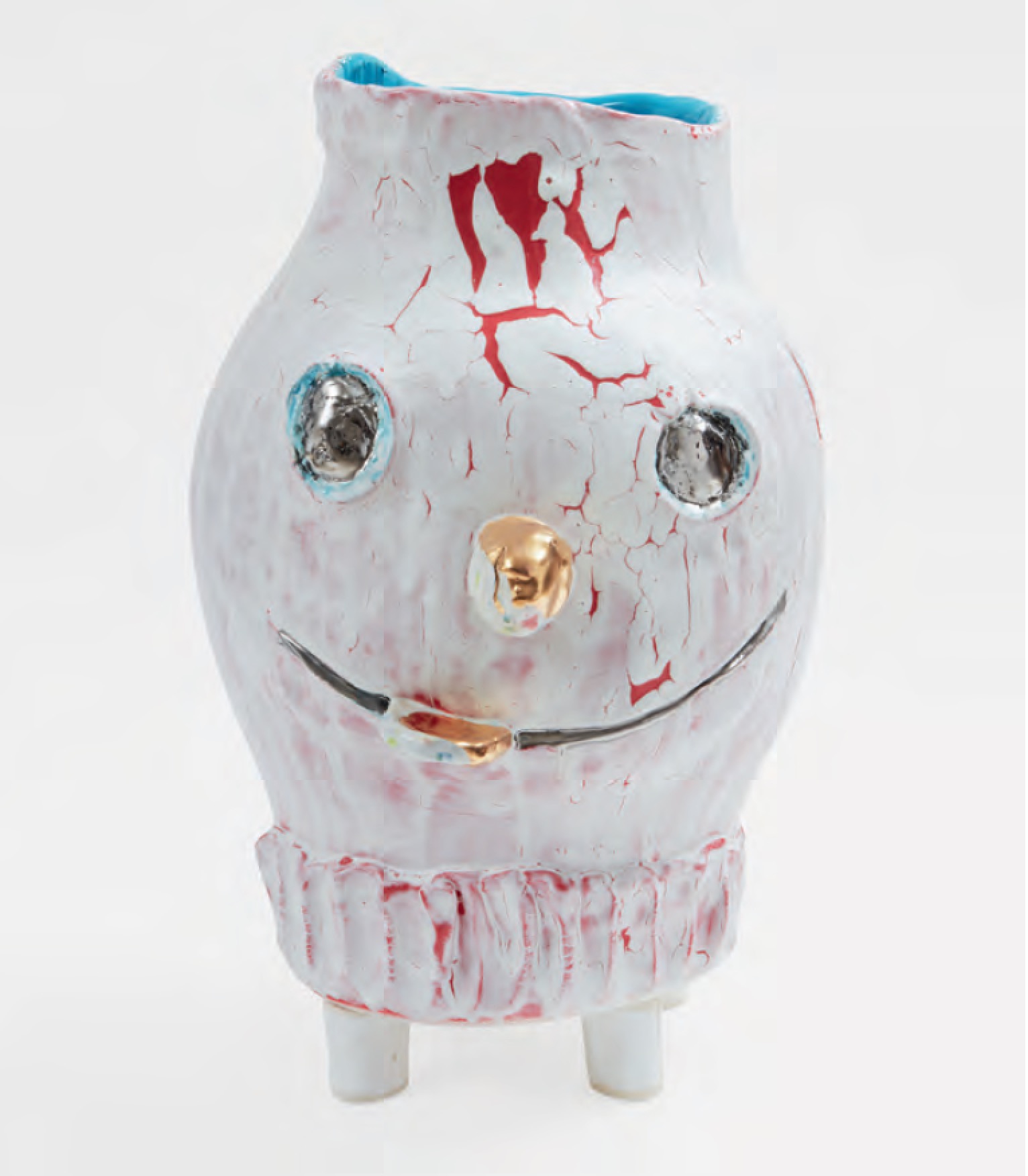
Is how you display a piece an important element of the work itself? Do you ever suggest how something might be displayed? I’m presently making larger individual works that weigh up to 80 pounds, with these larger works I’m creating specific bases that the work can live on. The bases I’m making for the larger work are made from large pieces of Oak, Ash and Fir from a mill near my studio in upstate New York - large rustic studio type work tables which feel naturally connected to my work. This presentation facilitates a single central, stand alone view, an independence for the work. The base is a moment to reiterate and centre the work, adding to the story without challenging the subject.
What’s next for you, and what’s next for ceramics? Brazing Brass. Heating and bending steel. Applying metal to the mud. Combining diverse ceramic elements and motifs using heat formed metals to structure a narrative. I want to tell a story that is at once recognizable and at the same time uncanny. I would like to fold the emotional and gestural back in on itself roll it up and start all over again. The future of anything seems to depend on both: perception and reception.
It's possible Ceramic’s popularity will grow into a global artistic phenomena, becoming a language for the next five generations or perhaps simply recede into the shadows once again, awaiting future rediscovery. In any case we know with some certainty that objects possessed of unique intrinsic power, Greek Black Figure Pottery for example, will continue to move forward through time regardless of whatever happens next. In the end it's really all about the object.
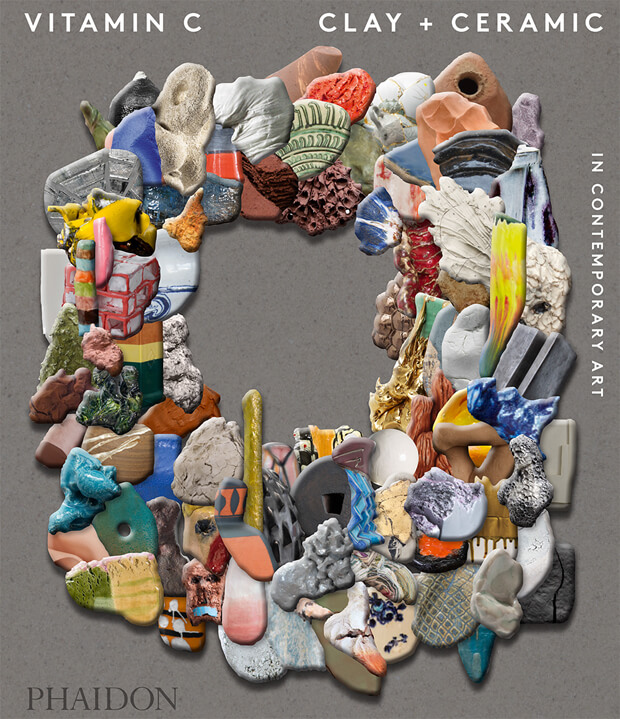
Clay and ceramics have in recent years been elevated from craft to high art material, with the resulting artworks being coveted by collectors and exhibited in museums around the world. Vitamin C: Clay and Ceramic in Contemporary Art celebrates the revival of clay as a material for contemporary artists, featuring a wide range of global talent selected by the world's leading curators, critics, and art professionals. Packed with illustrations, it's a vibrant and incredibly timely survey - the first of its kind. Buy Vitamin C here. And if you're quick, you can snap up work by the artists in it at Artspace here.